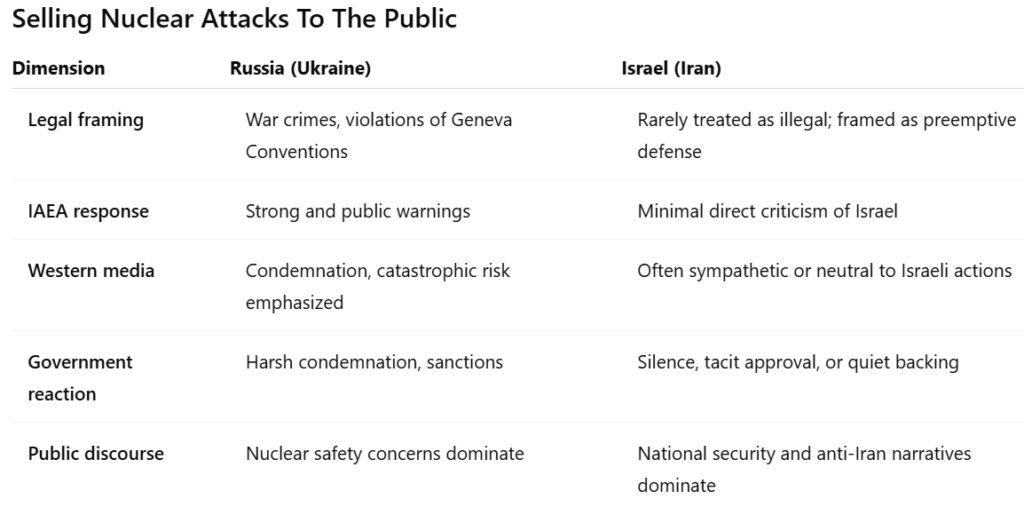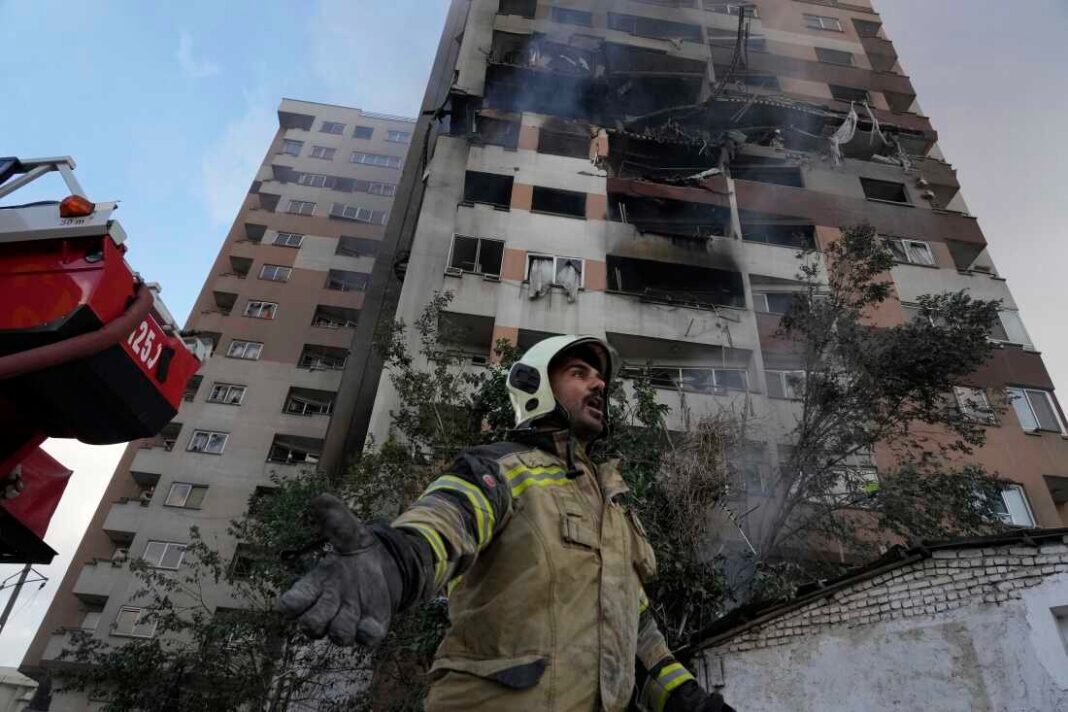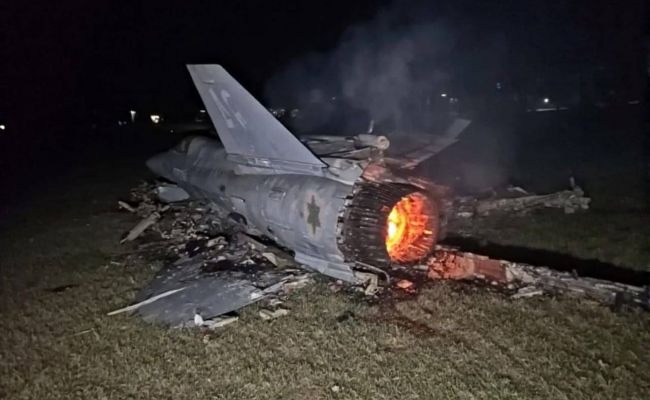On June 13, 2025, Israel launched one of the most expansive air assaults in modern Middle Eastern history. Under the codename Operation Rising Lion, over 200 Israeli fighter jets targeted more than 100 Iranian sites, marking a new peak in the long-simmering conflict between Tel Aviv and Tehran.
The operation’s scale, strategic intent, legal implications, and global reaction not only shocked observers but exposed glaring inconsistencies in how the world responds to nuclear-related military actions—particularly when compared to Russia’s attacks on Ukrainian nuclear facilities.

Military Dimensions: Precision and Power
The Israeli air campaign struck deep into Iranian territory. Fighter jets, including F-35s and F-15Is, were deployed in successive waves targeting Iran’s Natanz and Fordow nuclear facilities, underground bunkers, missile production sites, and residences of senior Iranian Revolutionary Guard Corps (IRGC) leaders. Air defense systems, including Russian-made S-300s and Iran’s Bavar-373, were neutralized within the opening minutes.
Among the casualties were top Iranian military figures: General Hossein Salami, IRGC commander-in-chief; Major General Mohammad Bagheri, armed forces chief of staff; and Major General Gholam Ali Rashid, commander of Khatam al-Anbiya HQ. Several nuclear scientists reportedly perished in precision strikes on research complexes.
Electronic warfare capabilities played a decisive role. Israeli cyber units jammed Iranian radar systems and communication infrastructure, enabling deep-penetration sorties. Reports suggest fueling and aerial staging support may have involved Gulf allies or neutral overflight corridors such as Saudi airspace.
Legal Dimensions: International Law and Hypocrisy
Under the UN Charter (Article 2(4)), the Israeli strike constitutes a breach of Iran’s sovereignty and a prohibited use of force. While Israel may invoke Article 51—claiming the action was an act of self-defense against an imminent nuclear threat—this concept of “preemptive self-defense” remains heavily contested in international law.
Iran’s nuclear program is under the oversight of the International Atomic Energy Agency (IAEA), and as such, military strikes on these facilities could violate Additional Protocol I to the Geneva Conventions. These provisions prohibit attacks on civilian infrastructure and personnel unless they directly contribute to military operations.
Moreover, the targeted killings of scientists raise serious legal concerns. If these individuals were not actively engaged in combat or military planning, their deaths may constitute extrajudicial assassinations.
Iran has filed formal complaints with the UN Security Council and International Court of Justice, framing the strike as a grave violation of international peace and a declaration of war.
Strategic Dimensions: Motives and Consequences
From a strategic standpoint, Israel’s goals are clear:
- Delay or dismantle Iran’s nuclear breakout capability, believed by intelligence agencies to be weeks away.
- Weaken the IRGC’s command structure, which coordinates proxy operations in Lebanon, Syria, Iraq, and Yemen.
- Assert military dominance in the region and reestablish deterrence.
Yet, the risks are immense. Iran has already retaliated with more than 100 drone launches, many of which were intercepted. A broader retaliation could involve long-range missiles, attacks on U.S. assets, or strikes on Gulf oil infrastructure.
Hezbollah, the Houthis, and Popular Mobilization Forces in Iraq are reportedly coordinating with Iranian leadership for a possible synchronized response. Regional war is a growing possibility.
Economically, oil prices surged between 7–11%, and maritime routes like the Strait of Hormuz face growing insecurity.
Diplomatic Moves: Censure, Silence, and Strategic Calculations
United States: President Trump praised the strike as “excellent” but emphasized U.S. non-involvement. Analysts believe Washington was pre-informed and likely shared satellite intelligence.
Europe: France, Germany, and the UK issued statements calling for de-escalation but stopped short of condemning Israel. The muted response underscored the geopolitical preference for Israel’s strategic narrative.
Russia and China: Both condemned the strikes unequivocally. Russia moved warships toward the Persian Gulf, while China requested an emergency BRICS summit and warned against unilateral military actions.
Arab States: Saudi Arabia, Bahrain, and the UAE issued generic appeals for peace. Oman and Qatar criticized Israel directly and affirmed Iran’s right to defend itself. The broader Arab League remains divided.
Iran: Supreme Leader Ali Khamenei called the strike a “declaration of war” and vowed massive retaliation. Iranian diplomats launched a global campaign to frame the attack as unlawful and destabilizing.
Media Framing and Global Double Standards
The international response to Israel’s strike on Iranian nuclear sites contrasts sharply with the reaction to Russia’s attacks on Ukrainian nuclear facilities.
When Russia shelled the Zaporizhzhia and Chernobyl sites, the IAEA issued urgent warnings. Western leaders and media denounced Russia’s actions as reckless, criminal, and potentially catastrophic. The UN, NATO, and the EU treated such behavior as potential war crimes. Sanctions intensified, and Russia’s pariah status deepened.
In contrast, Israel’s attack is largely framed in Western media as a “preemptive defensive measure.” The IAEA has so far issued no major condemnation, and NATO’s response has been muted. The lives of Iranian nuclear scientists and the risk of radiological contamination have received far less attention than the theoretical dangers posed by Russian shelling.
This discrepancy reveals how international law is selectively enforced. It also demonstrates the role of strategic alliances in shaping both media narratives and institutional responses. When a Western ally violates international norms, it is often contextualized; when an adversary does so, it is criminalized.
A New Phase of Escalation
Israel’s Operation Rising Lion is a watershed moment. It not only reshapes the Israeli-Iranian conflict but redefines red lines surrounding the militarization of nuclear diplomacy. With legal challenges mounting and Iran promising retaliation, the specter of all-out war looms.
More troubling is the precedent: that powerful nations can bypass international norms under the shield of strategic partnership. The selective application of law, ethics, and accountability threatens to unravel what little remains of the post-WWII international order.
The world now stands at a crossroads—between a rules-based order and one dictated by force and favored allegiances. What happens next may determine not only the fate of the Middle East but the credibility of global governance itself.




